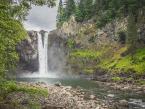Top 10 Scariest Theme Park Rides Globally

Intro: A Symphony of Screams and Adrenaline
Picture this: You’re strapped in, your heart pounding in sync with the clanking sound of the coaster making its initial ascent. As you reach the peak, a fleeting moment of silence and stillness surrounds you—then gravity kicks in, and your world turns upside-down. Welcome to the realm of the world’s scariest theme park rides, where physics and imagination conspire to leave you exhilarated, screaming, and begging for more.
Tower of Terror II: The Gold Coast’s Gravity-Defying Marvel
Let’s begin our journey Down Under at Dreamworld in Gold Coast, Australia. Home to the Tower of Terror II, this steel leviathan was once the world’s fastest and tallest coaster. Capable of carrying 14 passengers, the coaster rockets backwards at a blistering 100 mph, reaching a vertigo-inducing height of 377 feet. Along your vertical odyssey, you’ll experience 6.5 seconds of total weightlessness. When you finally hit the summit, gravity takes the wheel, and you plummet as fast as you soared. As they say, face gravity, face first.
Fahrenheit at Hershey Park: An Ingenious Viral Sensation
Next up is Fahrenheit at Hershey Park, USA—a ride that captivated the world through a viral marketing campaign back in 2008. This architectural marvel initially entices thrill-seekers with its 97-degree drop—the steepest of its time. Clocking speeds up to 60 mph, it’s a veritable roller-coaster ballet featuring six inversions, including corkscrews and barrel rolls. The name, inspired by Ray Bradbury’s Fahrenheit 451, adds an extra layer of intrigue to this already adrenaline-pumping ride.
Superman Ride of Steel: An Old-School Fan Favorite
When you’re at Six Flags, don’t overlook the Superman Ride of Steel. Though it may lack the bells and whistles of its modern counterparts, this coaster is a classic in its own right. With speeds topping 77 mph and a drop from 221 feet, it’s no slouch in the thrill department. A virtual reality feature was added in 2016, simulating Superman’s fight against Lex Luthor’s bots, only to be removed seven years later. Proving, perhaps, that sometimes the original is still the best.
X-Scream in Las Vegas: Fear at 866 Feet
Now, what happens in Vegas can leave you breathless—literally. Perched atop the Stratosphere Las Vegas, X-Scream is the epitome of simplicity and fear. This ride consists of a single car on a 68-foot rail that tilts and dangles you off the side of the tower at a dizzying height of 866 feet. The disorienting tilts and stomach-churning drops are enough to make even the bravest of souls question their life choices.
Giant Canyon Swing: A Swing Like No Other
If the idea of signing a waiver before a ride terrifies you, then the Giant Canyon Swing at Glenwood Springs, USA, might not be for you. This swing, suspended 1,300 feet above Glenwood Canyon, catapults you over the abyss at 50 mph. The experience also offers stunning panoramic views, that is if you dare to open your eyes.
King de Ka: A Royal Rush
Speeding up to 128 mph in a mere four seconds, King de Ka in New Jersey is the world’s second-fastest coaster. Named after a rare Bengal tiger, this ride catapults you over a 400-foot tower and back down in a breathtaking spiral—all in a compact 28 seconds that feel like an eternity.
Colossus: A Looping Spectacle
Designed to flip your world upside-down, Colossus was the world’s first coaster with 10 inversions. As you zoom through its track, you’ll find yourself flipped, twisted, and turned a dizzying 10 times in just under two minutes—a true marvel of engineering that inspired an identical version in Guangzhou, China.
X2: The Fourth Dimension Awaits
X2 pushes the envelope by offering the world’s first fourth-dimensional coaster experience. Unlike traditional rides, your seat spins and twirls independently, syncing with the coaster’s own loops and turns. In 2007, X2 upped the ante by adding flamethrowers—because why not?
Asia Naika: Japan’s Mechanical Monster
If X2 got your heart racing, then meet its Japanese cousin, Asia Naika. Located in Fuji-Q Highland Park, this fourth-dimensional coaster outdoes its American counterpart by reaching heights of 250 feet and speeds of 78 mph. With a record 14 inversions, it’s the undisputed king of roller coaster acrobatics.
Insanity: Where Even The Brave Tremble
Lastly, we circle back to Las Vegas. Insanity, located atop the Stratosphere, suspends you 64 feet off the side of the building, spinning you around at a nerve-wracking three Gs. And if that’s not enough, your seat tilts to a 70-degree angle, compelling you to look 900 feet down. The ride once malfunctioned in 2005, leaving riders hanging in the air for 90 minutes—a memory that’s as unforgettable as the ride itself.
Whether you’re a roller coaster aficionado or just in it for the spine-tingling thrills, these rides are the epitome of human ingenuity and a testament to our insatiable appetite for adventure. Strap in, and let’s defy gravity.
Conclusion: The Irresistible Allure of Fear and Fascination
In the grand tapestry of human experiences, there’s something irresistibly compelling about voluntarily stepping into a metal machine designed to push the very limits of physics and our own psychological thresholds. The world’s most terrifying theme park rides serve as both a testimony to our fascination with the extremes and a manifestation of our complex relationship with fear. For some, it’s a rite of passage; for others, an endeavor to reacquaint themselves with the exhilarating trembles of adrenaline, a chemical reminder of our primal instincts.
As we hurtle through spirals, ascend to cloud-skimming heights, and plummet down in gravity-defying falls, there’s a profound sense of unity. We are collectively bound by the ephemeral yet vividly intense experience that these mechanical marvels offer—a symphony of gasps, screams, and laughter that touches deeply with our shared desire for excitement and adventure.
So why do we do it? Why do we queue for hours, often under the unforgiving sun or against chilling winds, for a mere few minutes—or even seconds—of elation? Perhaps it’s the allure of conquering the unconquerable, defying our innate fears and hugging the exhilarating unknown. Or maybe it’s the simpler, more visceral thrill of feeling truly alive, fully present in a moment unburdened by the complexities of the everyday world.
Whatever your reason, remember that these rides are far more than just steel, cables, and mechanical parts; they are capsules of experience, each one promising a unique blend of emotional highs and lows, engineered to perfection but colored by our own personal narratives. And though the memories may fade, the feelings stay—a nostalgic yearning for that raw, unfettered sense of freedom, a momentary escape from the realm of the possible into the extraordinary.
The next time you find yourself standing before one of these modern-day titans, clutching your ticket like a talisman against the surge of anticipation and trepidation, know that you are about to participate in a tradition as old as humanity itself: the quest for thrills, the hunt for the sublime, and the eternal dance with the very essence of fear and joy. In that instant, as you soar through the air or plummet towards the Earth, you’ll find that the ride isn’t just a ride—it’s a microcosm of life itself, rich in experiences, emotions, and, most importantly, stories worth telling.
What are some general tips for first-timers who want to try these extreme rides?
If you’re new to the world of adrenaline-pumping rides, preparation is key. Start by staying hydrated and eating a light meal—you don’t want to face these gravity-defying challenges on an empty stomach or risk dehydration. Wearing comfortable clothing can also make a world of difference, as restrictive or cumbersome outfits can detract from the experience. Also, consider beginning with less intense rides to acclimate your body to the sensations. Lastly, but most importantly, listen to your body; if you’re feeling overly anxious or unwell, it might be best to sit out and save the thrill for another day.
How can I conquer my fear and actually get on one of these rides?
Addressing your fear is a personal journey, but there are some general guidelines that can help you take that leap of faith. Visualization techniques can often work wonders; imagine the entire ride, the thrill you’ll feel, and the sense of accomplishment waiting for you at the end. If possible, watch others as they take the ride—sometimes seeing people exit with smiles and laughter can dissipate your own fears. You could also take along a friend who’s experienced with extreme rides, as their enthusiasm and assurance could serve as your moral booster.
Do these extreme rides have age or height restrictions?
Yes, most of these extreme rides have certain age and height restrictions to ensure the safety of all riders. It’s crucial to consult the specific guidelines for each ride, usually listed on the theme park’s website or at the ride’s entrance. These limitations are not arbitrary; they are based on exhaustive testing and serve to minimize risks associated with the ride’s extreme forces and high speeds.
What should I do if I feel sick or dizzy after riding?
Feeling nauseous or dizzy after such intense experiences is not uncommon. If this happens, the first thing to do is to sit down in a shaded area and take deep breaths. Drinking water can also help, but avoid eating immediately after the ride, as that might exacerbate your symptoms. If you continue to feel unwell, seek medical attention, which is usually readily available in the park. It’s always better to be cautious and get checked out, rather than ignore your symptoms.
Are there any rides that offer a similar thrill but are less extreme for those who are not quite ready?
Absolutely, theme parks often offer a range of rides designed to cater to different thrill levels. If you’re not ready to tackle the most extreme rides, many parks have “junior” versions or similar rides with reduced speeds and heights, offering a more moderate, yet still exciting, experience. These can be a fantastic way to ease into the world of high-adrenaline attractions, allowing you to build up your courage while still enjoying a genuine thrill.

